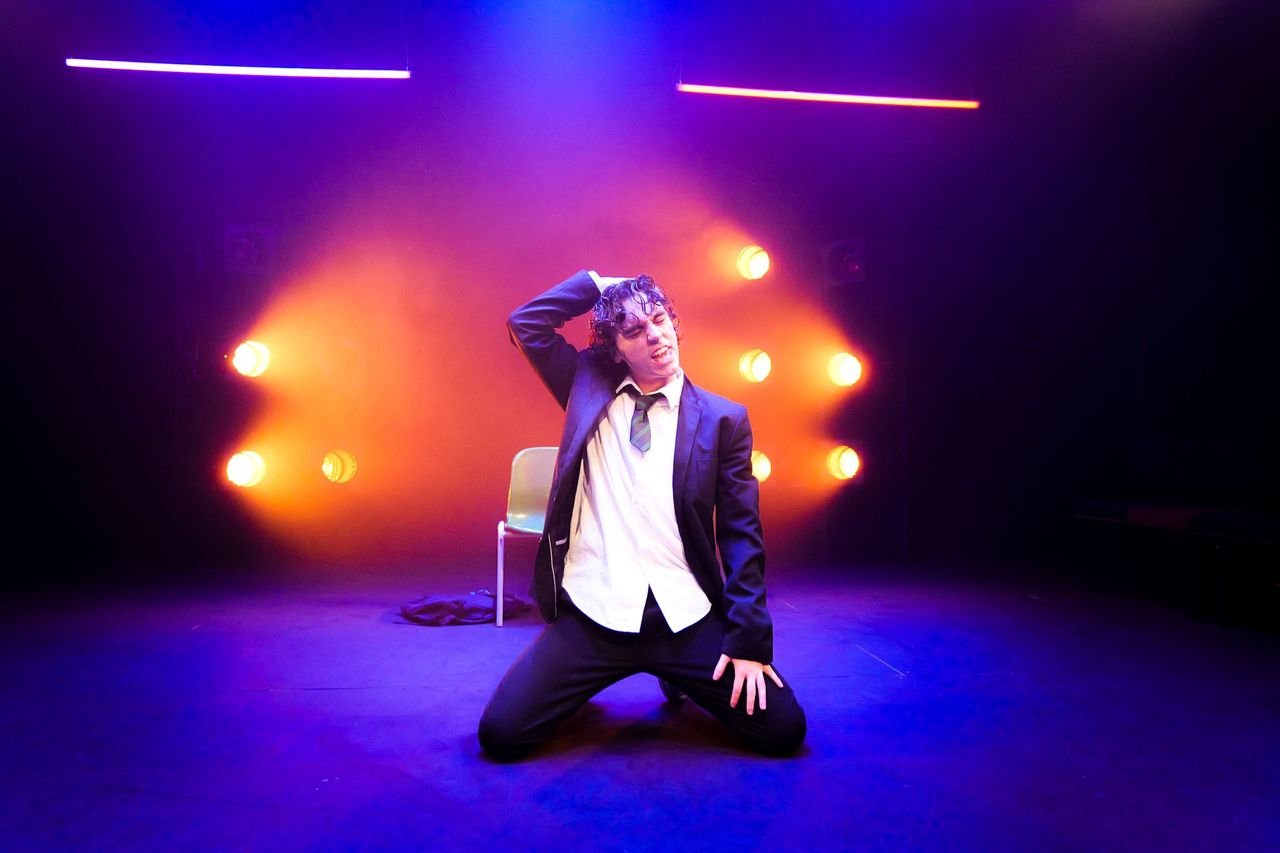Here in America, Orange Tree Theatre Review
Jasmine Blackorow (Miss Bauer) and Michael Aloni (Art) in Here in America. Photo by Manuel Harlan
Written by Eleanor for Theatre and Tonic.
Disclaimer: Gifted tickets in return for an honest review. All opinions are our own.
David Edgar's new play, Here in America, explores the complex relationship between Arthur Miller and Elia Kazan during the 1950s Communist purge in Hollywood. Following the 1929 financial crash, millions were plunged into poverty, leading many to embrace Communism as a solution. Quiet rebellions and secret gatherings emerged, with petitions as one form of protest. However, the Cold War shifted perceptions of the Soviet Union, and the House of Un-American Activities Committee (HUAC) began investigating former Communist Party members. Set against this McCarthyist backdrop, the play delves into how Miller and Kazan wrestled with their loyalties and the strain this placed on their friendship.
While I was familiar with Arthur Miller, particularly his iconic plays A View From the Bridge and The Crucible, Elia Kazan was unknown to me. I recognised some of his films, like A Streetcar Named Desire, but was eager to learn more about both men’s roles in this turbulent era of Hollywood history.
Here in America opens with Miller (referred to as ‘Art’) and Kazan (referred to as ‘Gadg’) meeting in a park to discuss whether Gadg will direct Art’s new play. Despite their familiarity, their interaction is tense and frosty. The narrative then shifts back ten years earlier, where we see Gadge and his wife Day (Molly Day Thatcher) playing Scrabble and reflecting on the ‘Hollywood Ten’ (a group of screenwriters and directors blacklisted for their Communist ties), worrying that the arts might be overshadowed by politics. Following Art’s arrival, the two men meet privately to reminisce about their time with Miss Bauer, a woman they both became fond of and to discuss their troubled home lives. Their friendship is strained, not only by their mutual feelings for Bauer but also by their diverging views on the Communist cause. Gadg eventually reveals the true reason for inviting Art to speak with him, driving an even deeper wedge between them. As events unfold, both men are forced to choose between doing what is right and what is best for themselves, raising the question of whether their friendship and collaboration can survive the upcoming betrayals.
I found some of the earlier scenes confusing. While I was still piecing together who the central characters were, I felt slightly bombarded with new names and places, making it hard to follow the initial interactions. For instance, I understood that Miss Bauer was significant, but it wasn’t initially clear how or where she first encountered Art and Gadg. Some scenes also felt overly long, causing moments that initially had clarity to become muddled. Although I grasped the core perspectives of both men, I sometimes lost track of the finer details in their evolving arguments.
The staging designed by Simon Kenny was simple but effective, with two grey benches used in every scene and a third plinth that rose from the floor. This minimalist approach was complemented by intricate lighting, which I found enjoyable. Although most of the play takes place on the singular stage, there were moments when two balcony points were used to excellent effect. Charles Balfour’s lighting design was simple yet dramatic, drawing focus during key moments. I particularly appreciated the bold text projected on the walls, indicating the year and location of each scene. This was especially useful during significant time jumps and added visual variety. The text was also used creatively during one scene to flash lists of names, and in another it mimicked the effect of camera flashes. The lighting subtly highlighted moments of reflection or emotional clarity, adding depth to the performance. There was a moment when the lights came up to reveal the audience, integrating us into the world of the play, which was a nice touch. Bella Kear’s sound design was understated, almost to the point of being unnoticeable, which gave the play a naturalistic tone. Certain scenes also featured added sound effects, like heavy breathing, which heightened the intensity and focus on the actors.
The small, central cast of Here in America gave strong performances. Shaun Evans and Michael Aloni as Gadg and Art brilliantly portrayed men who seemed desperate to communicate and maintain a bond with one another but were unwilling to confront their deepest truths. Both actors brilliantly moved around the space and did well to keep the scenes moving and engaging with their vocal delivery. Miss Bauer, played by Jasmine Blackborow, served as the perfect conduit for Gadg and Art to reflect on their past and form their opinions in the present. I also appreciated how her character's appearance subtly shifted, presenting her in a way that will feel increasingly familiar to the audience. Jasmine brilliantly portrayed this recognisable character, making her a welcome addition to any scene.
Faye Castelow as Kazan’s wife Day, was also a positive inclusion in this play. I loved how her views were as strong as her husband’s. Faye delivered some of the most impassioned speeches in the play, and I found her succinct delivery far more compelling than some of the lengthier, more meandering dialogues.
In conclusion, I went into this play intrigued by its setting and characters. While the core narrative is engaging and raises questions that still resonate today, I found some scenes overly long and, at times, confusing. Although I could follow the story and understand the motivations of the characters, the pacing and length detracted from my overall enjoyment. That said, the lighting, staging, and use of sound were highly effective. The core of the story is strong and the writing and direction are compelling, and with some reworking, it could appeal to an even broader audience.
Here in America is playing at Orange Tree Theatre from the 14th September 2024 – 19th October 2024.
★ ★ ★
















